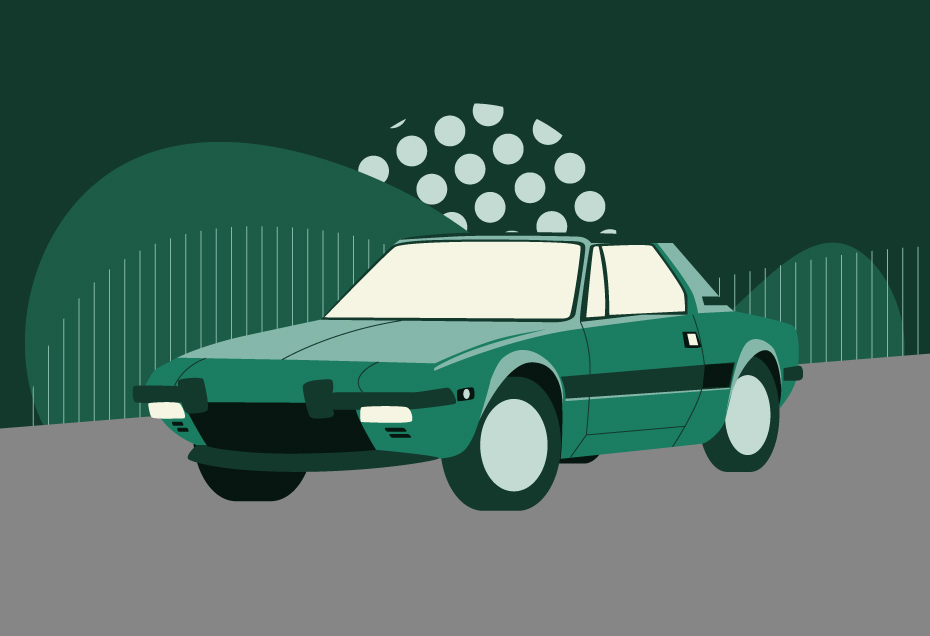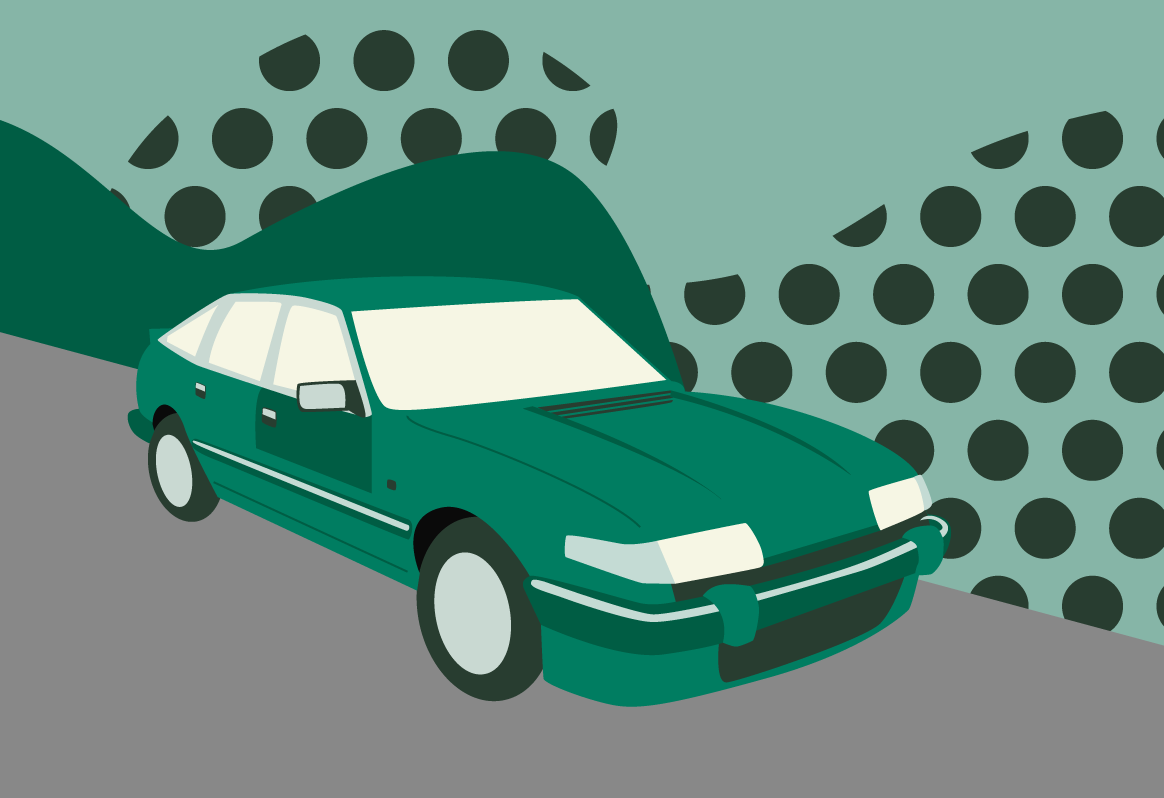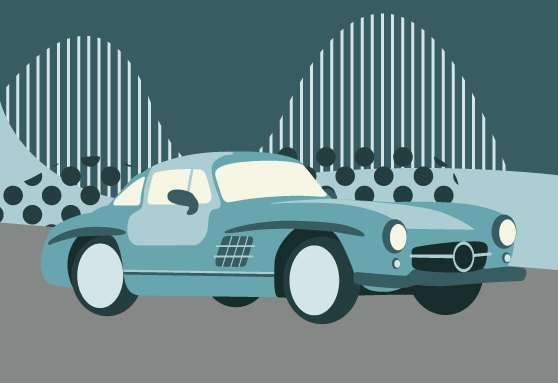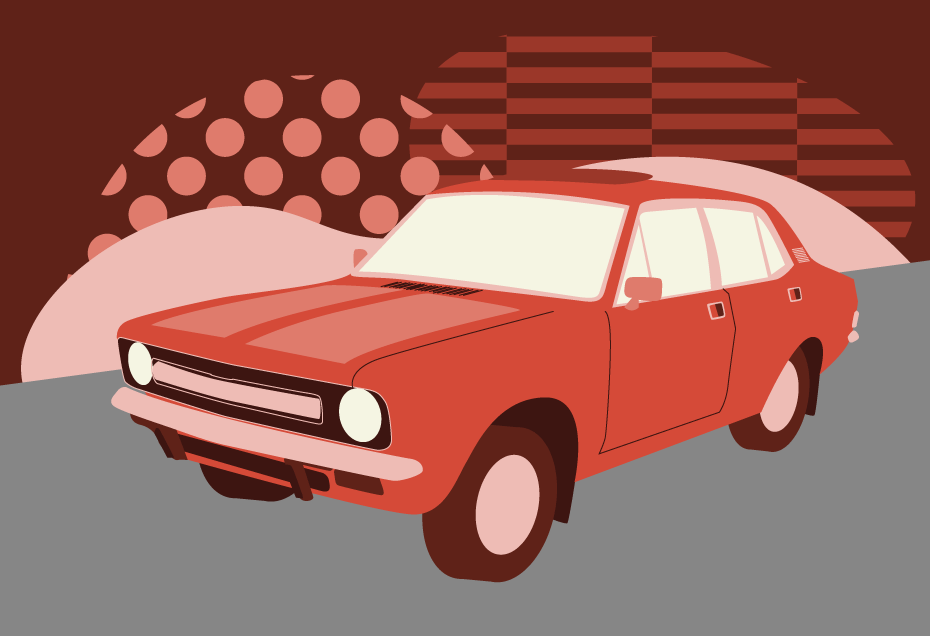Back in the early 1970s, there was nothing on the market quite like the Fiat X1/9.
A mid-engined sports car of tiny proportions, the little Fiat had a futuristic wedge design, a perky high-revving engine, and whip-smart handling to die for.
The only downside was that British motorists had to wait five long years for a right hand drive factory version to arrive in 1977.
We look at the history of a car that was years ahead of its time, and in a class of its own.
The Fiat X1/9 was born of a marriage between two wildly different vehicles – the Autobianchi A112 Runabout concept by Bertone, and Fiat’s own 128 small family car.
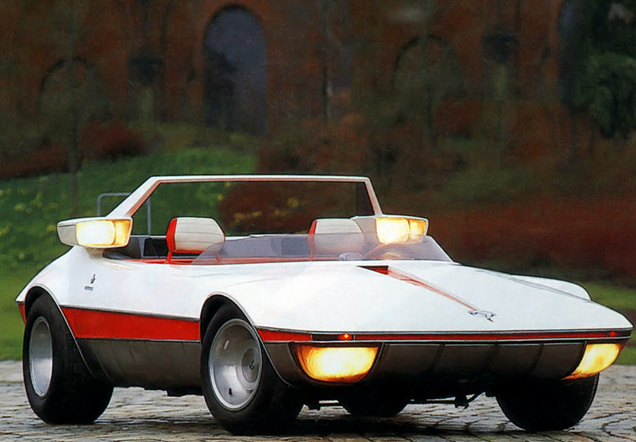
While the Marcello Gandini-designed Autobianchi provided the inspiration for the body, the 128 gave a tweaked version of its 1.3-litre engine to an all-new two-seater to replace the ageing Fiat 850 Spider.
The magic trick that Fiat pulled off was to create an affordable mid-engined sports car, previously the preserve of high-priced exotics like the Lamborghini Miura, also designed by Gandini, and Ferrari Dino.
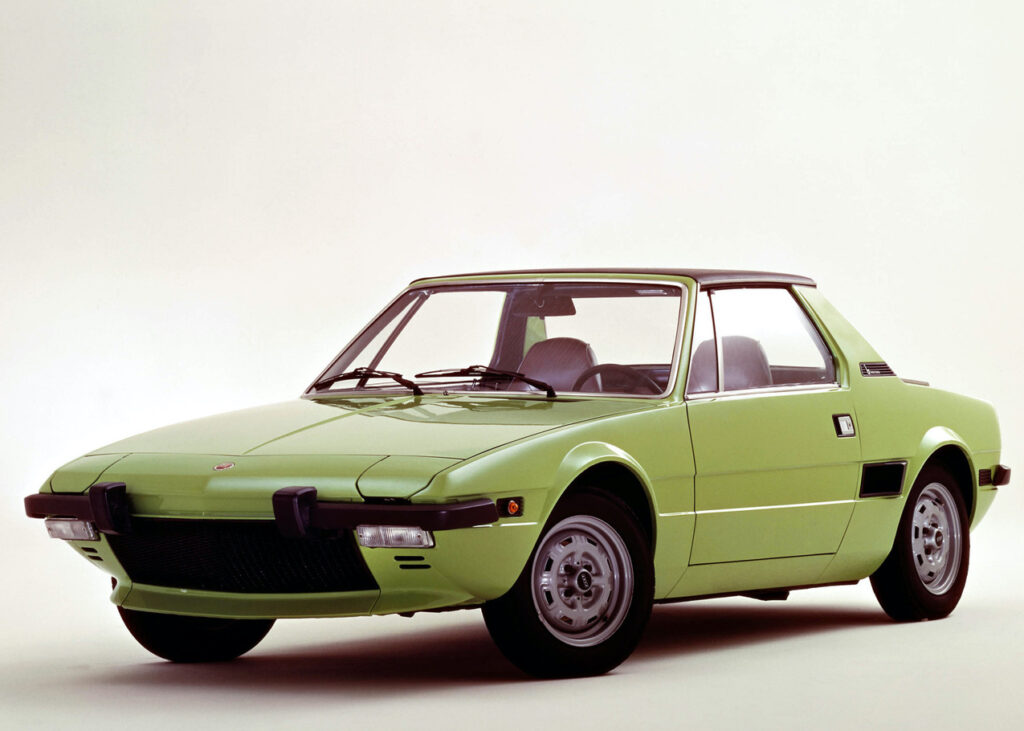
Fiat X1/9 engineering and layout
The 128’s engine was breathed on by legendary former Ferrari engineer Aurelio Lampredi, who added a cast aluminium sump, aluminium head and twin-choke Weber carbs.
It also used different manifolding, a higher 9.2 to one compression ratio, and lighter conrods and pistons, which was enough to increase output to 73bhp, allowing a top speed hovering around the 100mph mark.
But the biggest change was in positioning the engine transversely just behind the driver’s head and in front of the rear axle, in a sharp-edged design to create a baby supercar costing a fraction of the real thing.
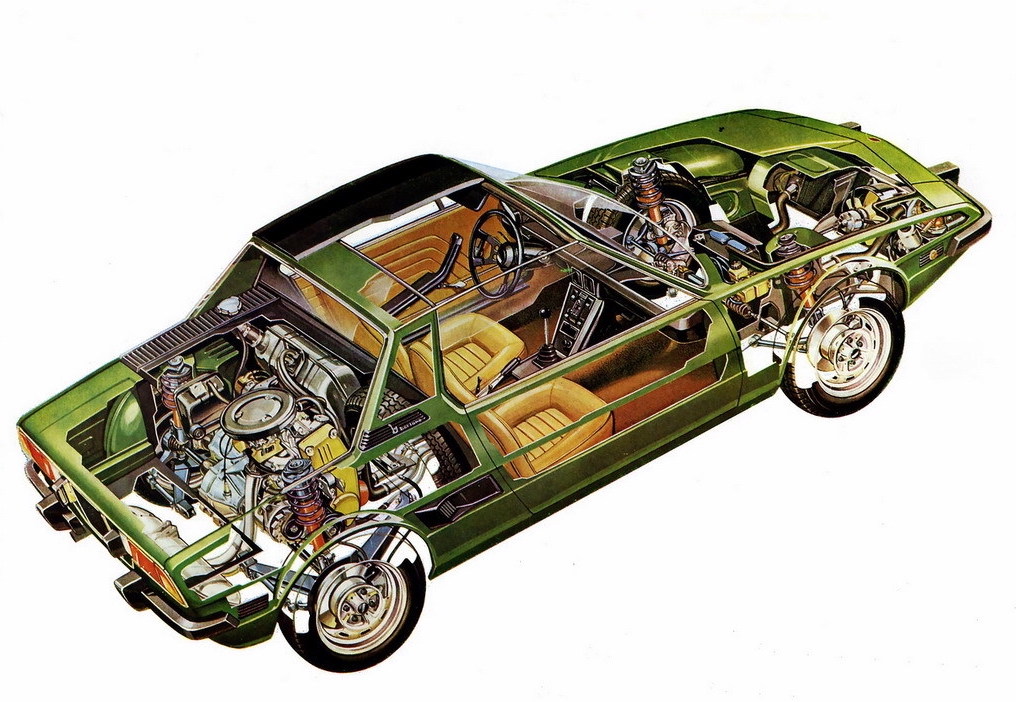
The targa top necessitated a stout floor pan and hefty front and rear bulkheads, which resulted in a kerb weight of 880kg, a little higher than the 128 coupe.
The 128’s suspension was adjusted with lower front struts in relation to the hubs, with stronger, wide-based wishbones at the rear to provide improved control.
Giuseppe Puleo, of Fiat’s advanced design department, said at the time that the aim was to provide neutral steering with gentle oversteer at the limit that could easily be corrected by the driver.
“The aim was to make the driver king of the car,” he said, “and not the car king of the driver.”
The fuel tank and spare wheel were located between the engine and seats for better weight distribution and handling.
Stopping power was provided by discs all round on 13-inch stamped steel wheels, while the mid-engined layout allowed for not one, but two, boots – one behind the engine and one at the front. The targa roof could be stowed under the bonnet.
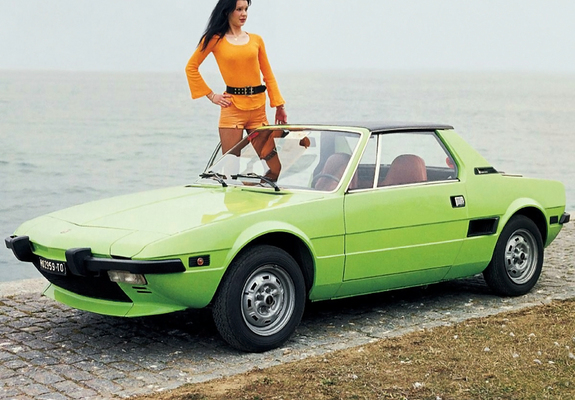
Originally slated to be called the 128 Spider, Fiat decided instead to break with tradition and use the car’s codename – X1/9 – when the car was launched in Sicily in 1972.
Fiat X1/9 an immediate hit
The X1/9 was the first Fiat to be aimed specifically at the American market, designed to meet the then-expected 30mph US crash regulations.
This was no surprise, given the popularity Stateside of Fiat’s succession of open-topped Spider cars from the 1100 TV of the 1950s through to the 124 Spider and baby 850 Spider.
Power for the US cars was down to just 66bhp, with a top speed of 93mph because of emissions controls, but that didn’t stop it being well-received.
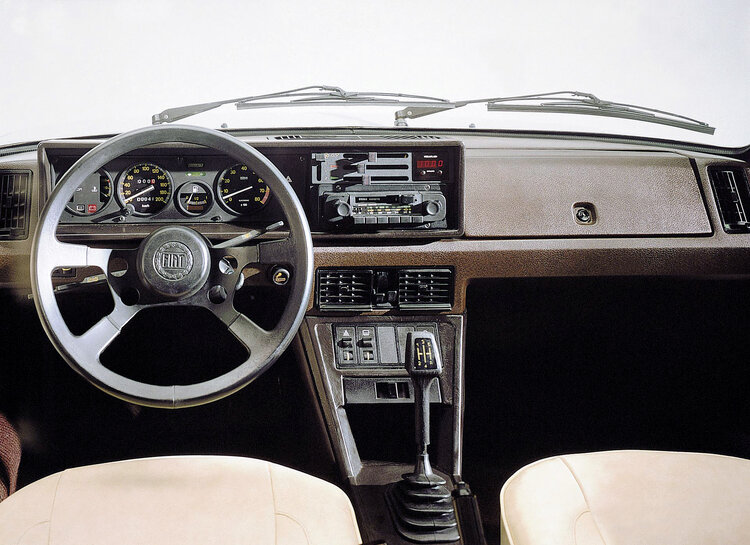
Road & Track magazine gushed over its Bertone design.
“In styling, the Bertone-designed X1/9 is a delight, with clean forms and an aggressively agile appearance that is entirely appropriate,” it wrote, equally impressed by its cabin.
“The interior is extremely sophisticated, almost BMW-like in appearance, with a 4-spoke matte-black steering wheel and a handsome instrument panel.”
And the X1/9 didn’t disappoint on the road.
“This new Fiat rates as a thoroughly modern sports car, lively in performance, precise to handle, and a very real pleasure to drive.”
The timing of the car’s launch, amid an oil crisis that saw petrol prices rocket, was perfect, with the 128’s engine always having a reputation for frugality without a loss of spirit.
In its first four years of production, around 44,000 X1/9s were sold in the United States alone, with production running at around 100 cars a day.
Right hand drive X1/9
It’s not strictly true to say that the British had to wait until 1977 for the right hand drive Fiat X1/9.
Fiat specialists Radbourne Racing had been offering conversions of factory left hand drive models for a year before the Italians finally bowed to pressure from dealers to introduce a production model.
The converted car carried a £350 premium over the £3,350 cost of a left hand drive car, however, and production volumes were obviously very low.
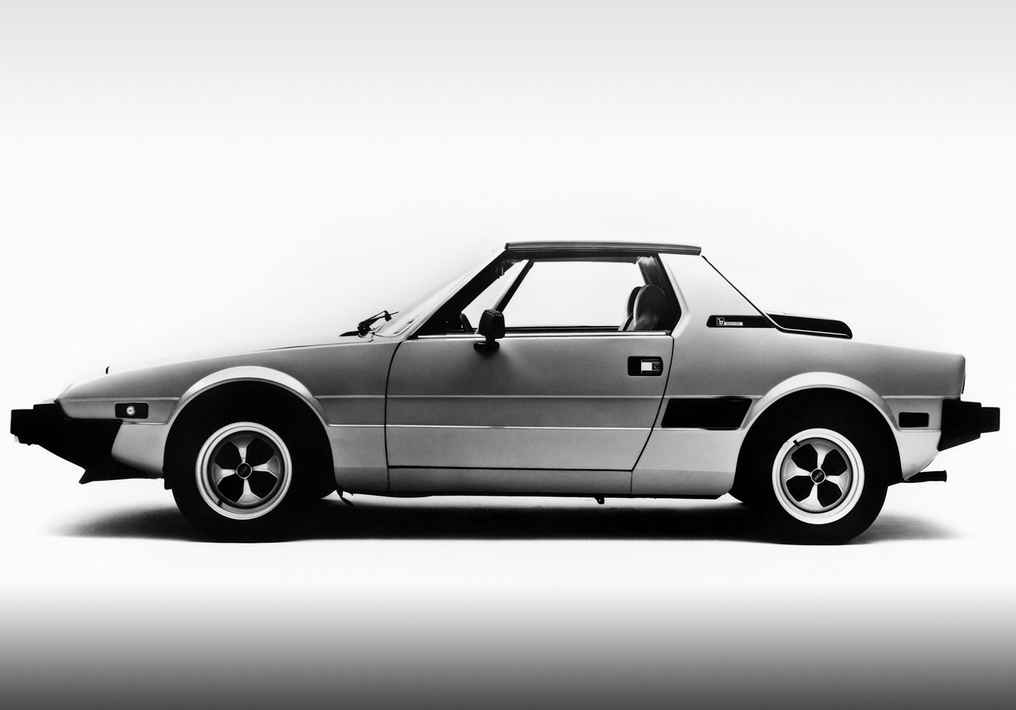
For most Brits after a diminutive sports car, it was the MG Midget or Triumph Spitfire, both of which dated from the early ‘60s and looked distinctly long in the tooth compared with the sharper Fiat.
John Anstead, of Radbourne Racing, lamented the lack of progress made by the home team.
“The tragedy,” he said, “is that this car should have been an MG. There is nothing magical about it, the X1/9 is merely a sensibly designed assembly of parts from the Fiat range, housed in a very appealing body: an exercise Leyland could have duplicated within their massive range.”
Jeremy Walton, of MotorSport magazine, tested a Radbourne car in August 1976 – a few months before the factory right hookers became available on these shores.
“The X1/9 is a genuine enthusiast’s car, which happens to appeal to a very broad section of the population,” he wrote.
“The handling is astonishing. Even when we had a puncture and a narrow Pirelli had to be fitted to one steel wheel at the front, the X1-9 would still hustle around our test curves as well as better-known sporting saloons or coupes.”
Factory X1/9 arrives in the UK
All of these impressions were confirmed when the factory right hand drive version hit dealers in early 1977.
Autocar, writing in March of that year, described the “unburstable, free-revving nature of the engine that positively encourages the use of maximum revs in each gear”.
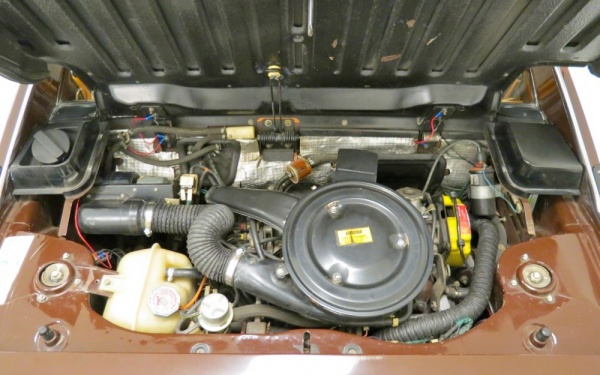
“Although engine speeds of 7000 rpm may seem excessive, the ohc engine is so smooth and lively that use of such revs gives no guilty feeling of lack of consideration,” the magazine added.
“A reassuring car at all speeds and under all conditions.”
The car was surprisingly well-equipped for the price of £2998, with tinted windows, fog lamps, heated rear window, driver’s exterior and dipping interior mirror, cigarette lighter, alloy wheels and cloth seats all standard.
There was even a well-made zip-up luggage grip that matched the upholstery colour and fit neatly in the rear luggage compartment.
Even the seating position was not typically Italian, with no requirement for the ‘knees up’ posture so prevalent in other cars from the country.
The only real criticism that could be levied at the little Fiat was the noise – from both the windows and the engine. But it was arguably a price worth paying for the sensational handling and sheer fun.
Autocar, like Anstead, were not shy in sticking the boot into the British manufacturers.
“In the way in which the MG Midget and Triumph Spitfire have frequently given youngsters of all ages their first taste of sports car motoring, so the Fiat looks destined to carry on the tradition – at the expense, one feels, of just those cars that created the market,” it wrote.
Fiat X1/9’s British wedge competitor
There was, of course, a British car that shared the Fiat’s wedge-based design, but lacked its clarity of purpose and pin-sharp handling – the Triumph TR7.
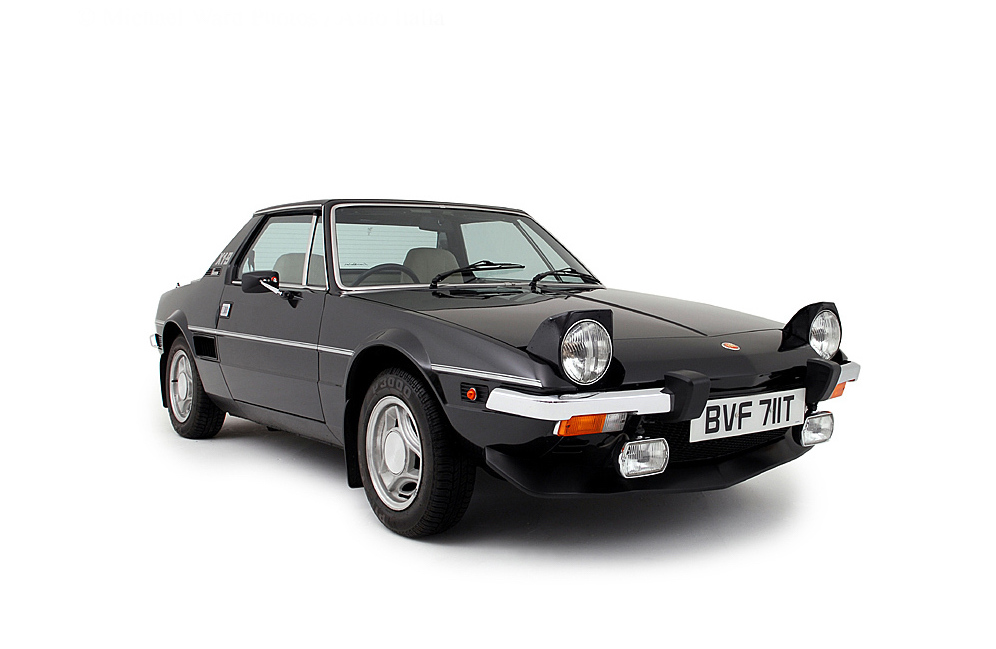
In truth, the wedge was the only reason to compare the cars – the Triumph was bigger, heavier, and more powerful, with a 2-litre engine and 105bhp.
It would always beat the Fiat in a sprint to 60mph – but did it do it with the same panache?
No, was the verdict of CAR magazine, who tested the two together in April 1977.
While the Fiat’s “Italian exotic” design was “dramatically handsome”, the TR7 was described as “an ugly hotch-potch” from the side and rear.
And while Bertone crammed a mid-engined layout into such a tiny footprint, Triumph merely made the TR7 ‘look’ mid-engined while keeping its layout entirely conventional.
On the road, CAR described a “peppy” and “eager” engine, with handling that is “sheer perfection”.
“It has such agility as to make it truly outstanding when it comes to cornering,” it added.
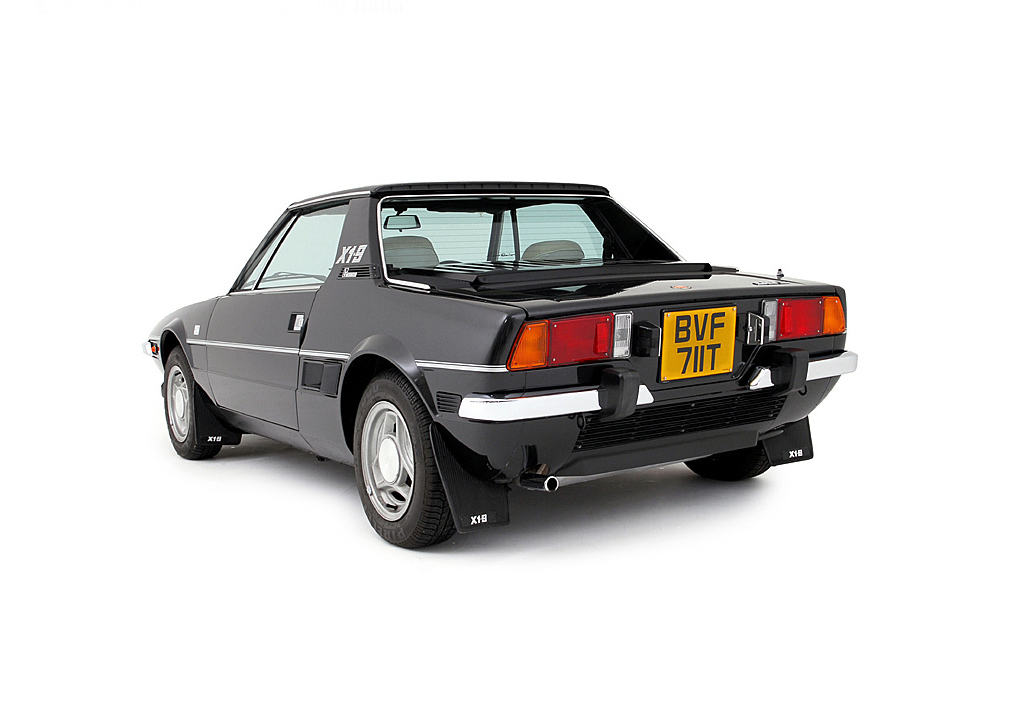
“Not many cars are as successful at combining looks, character and facilities to create so much driver appeal as the X1/9.
“The little Fiat gets on with the job of being the definitive small production sports car – the sort of car that, had the right decisions been taken a long time ago, Leyland might have created using Mini 1275GT or even Maxi components. It is just about flawless, a driver’s car par excellence.”
Fiat X/19, or Ferrari?
CAR magazine was so taken with the X1/9 that, in March 1978, they even posed the question of whether the £14,500 required to buy a Ferrari 308 GTB was really worth it.
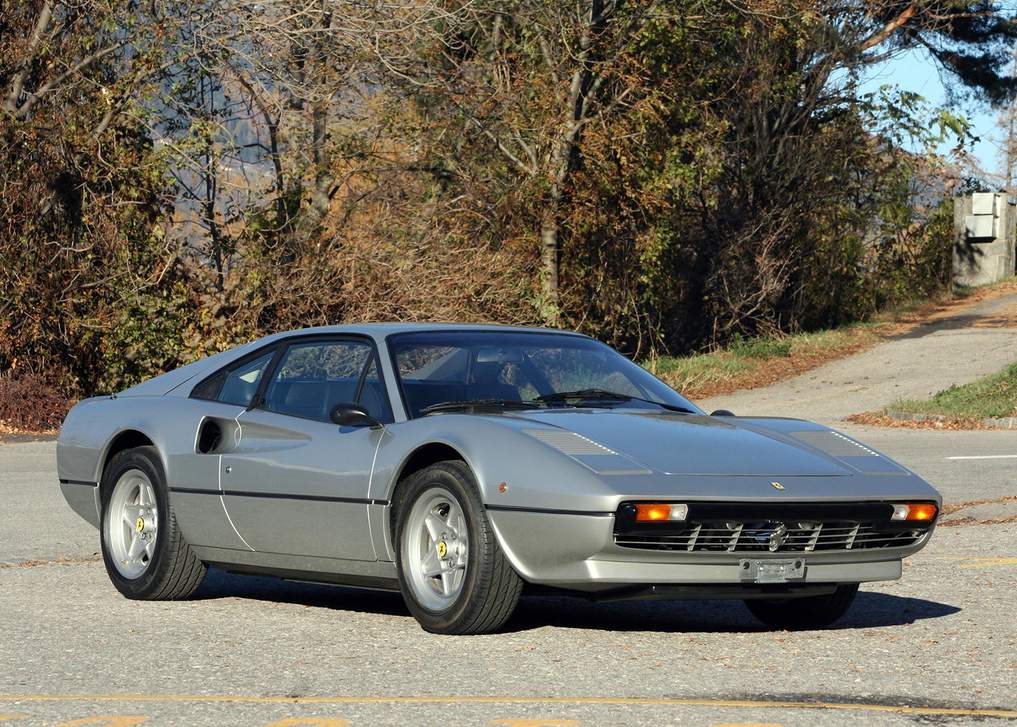
After all, couldn’t you have just as much fun in a Fiat for just £3,600?
OK, so you’re pitting a 1.3-litre four-cylinder motor with 73bhp against a 3-litre all-alloy V8 with 255bhp, and a top speed of 100mph against rather more than 150mph.
But both cars have two seats, engines mounted transversely behind the driver, four wheel disc brakes, rack and pinion steering, and rakish bodies from the drawing boards of famous Italian designers – Bertone and Pininfarina.
But they are, ultimately, products of the same culture, and imbued with the same spirit.
“Is it possible to see the X1/9 as anything other than a baby Ferrari, and praise be to the Lord for Fiat’s design to build it?” wrote CAR.
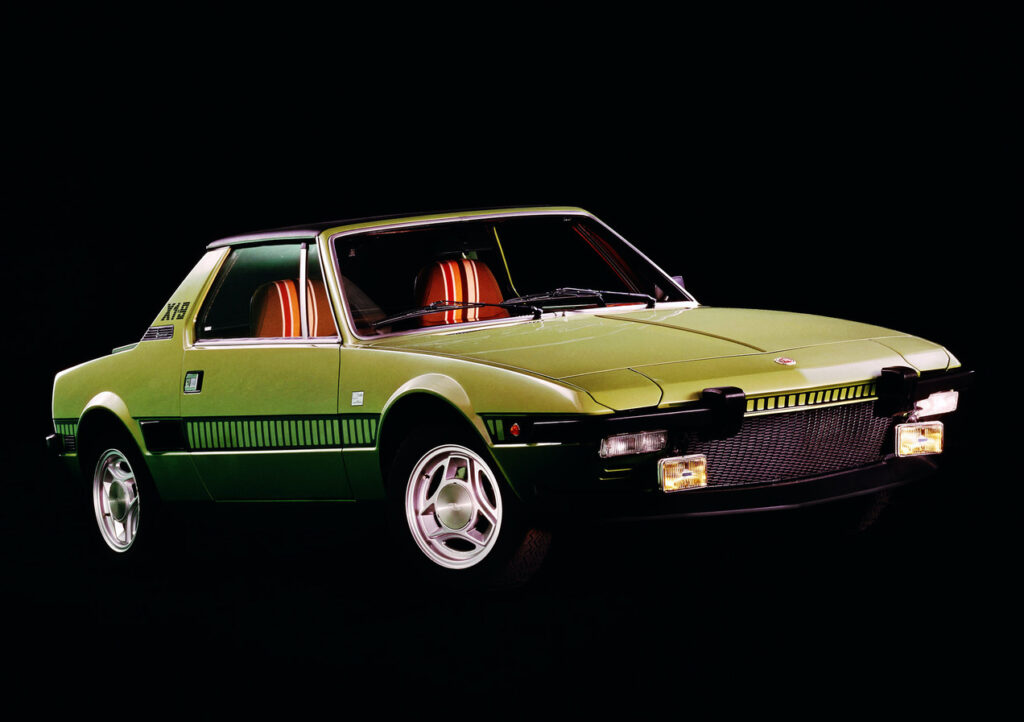
“You know that special Italian spirit is there in the little Fiat as soon as you start it up – a spritely, lively sound.
“And that’s the way the car feels. Swift and deft and alive – the way a sports car should. The steering is light and smooth, and pin sharp with it. You move the wheel and the car answers; you aim it and it obeys, whipping around corners with remarkable precision, security and speed.
“The mid-engined configurations link them inextricably, and it is in the handling that they are at their most similar. The Fiat’s spritely feel and its size and relative lightness make it seem irresistibly chuckable; the Ferrari is rather more decorous.”
Obviously, the Ferrari is much faster, has air conditioning, electric windows and an expensively-trimmed cabin.
“But, come now,” asked the magazine, “does that sort of thing add up to almost £11,000 worth of difference? Is the Ferrari even £11,000 more capable than the Fiat? Probably not. But there is £11,000 worth of intangibility. It is there in the way the Ferrari goes about its business. Its character is so delicious, the feel and the sound and even the smell of it so glorious that, for me, it borders on the priceless.
“But I am in no doubt there is a blood-link between it and the X1/9. It isn’t that the Ferrari is a bigger, faster, more expensive Fiat; the Fiat is a smaller, slower, cheaper Ferrari.”
Fiat X1/9 grows up with larger engine
For all the plaudits earned by the little Fiat, there was always a feeling that its fine chassis could more than handle a little more power.
It duly got it in 1979 in the form of the Fiat Strada’s 1498cc engine producing 85bhp, enough for a top speed of 112mph. Torque was up from 74lb ft at 3,900rpm to 87lb ft at 3,200rpm, and a five speed gearbox was available for the first time.
There were a few cosmetic changes too, including a raised engine cover to accommodate the taller powerplant, larger bumpers, and a revised interior.
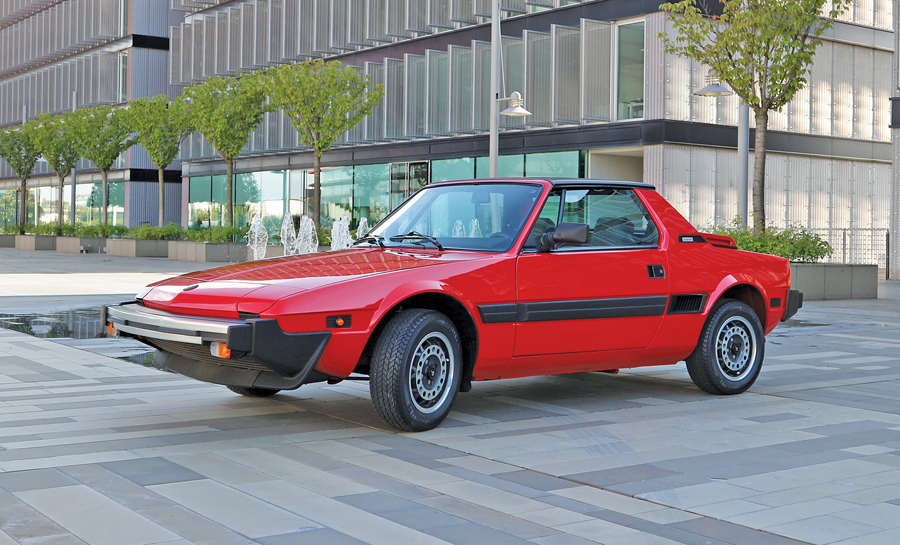
According to Autocar, the X1/9 had “virtually no direct competitor” at th £4,575 asking price,
“There is no other small mid-engined sports car in series production that comes close enough in specification to be considered,” it said.
By 1980, there were probably five affordable production sports cars to choose from – the MGB, Midget, TR7, Spitfire, and X1/9.
While the MGs and Spitfire still had loyal followings, they were well past their sell-by date in terms of styling and technology, which left the Fiat and TR7 as the only cars for forward-thinking motorists to consider.
But, as we’ve seen, the two cars were violently dissimilar other than their wedge designs – the Fiat was Italian, mid-engined, and very small, the Triumph British, front-engined and fairly bulky.
Adrian Flux Classic Car Insurance
CAR magazine tried again to pitch these two wildly different animals against each other – with the same result, a clear win for the tiny Fiat, described as “the best handling car this side of £15,000”.
“Using the 7,000 redline, the little car sounds very fast and angry, emitting what seems more than a 1.5-litre snarl from behind your head,” it said.
“Throttle response is instantaneous, the gear change and clutch so quick that there’s little time lost in applying the power after a decision is made.
“The car will begin to turn exactly where you dictate, and will change heading exactly according to the steering wheel. That gets you to the apex of the corner with a certainty and accuracy unknown outside Modena, or Hethel. It beats all competition within £10,000 of it.”
The end of the X1/9, but not quite
Up until 1982, the X1/9’s bodyshell had been manufactured by Bertone and then shipped to Fiat’s factory in Turin for final assembly.
When Fiat pulled the plug, after producing 140,519 examples, that wasn’t quite the end of the story.
Bertone took over full manufacture, under its own name, producing a further 20,000 cars before they also called time on the little sports car in 1989, long after Toyota’s mid-engined MR2 had finally given it some competition.


